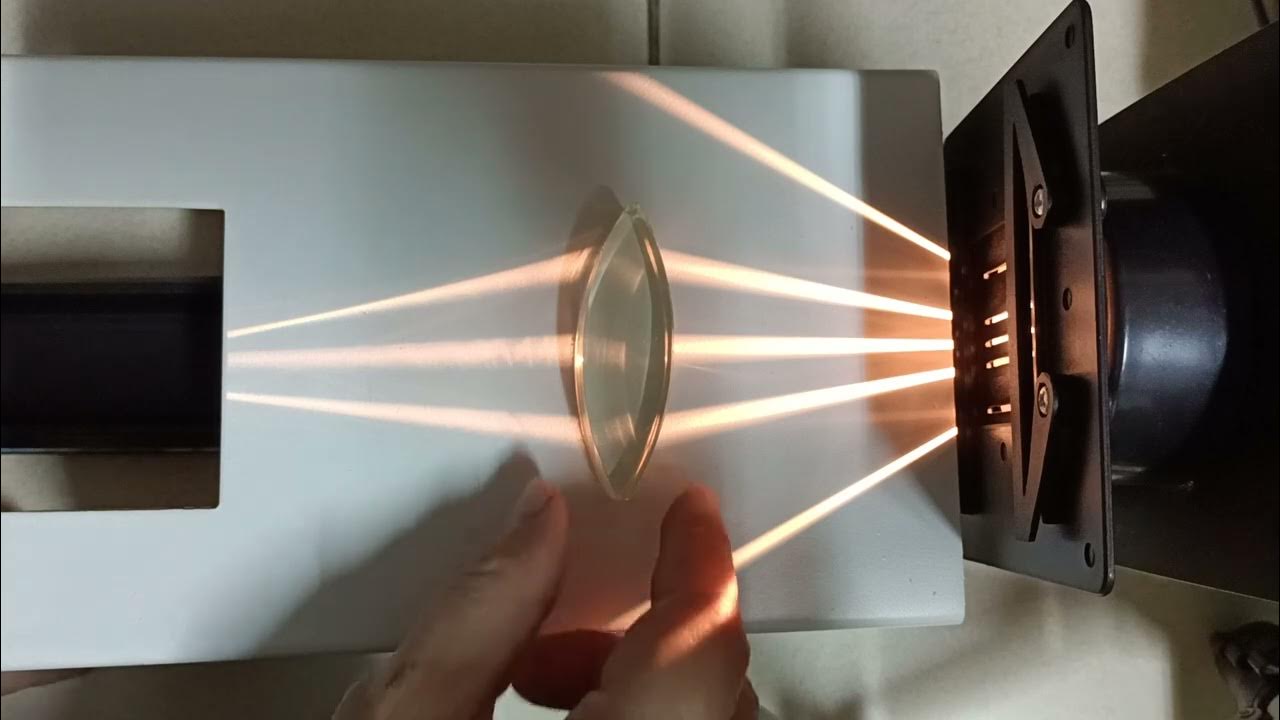Bab Cahaya dan Alat Optik - Part 1. Materi Sifat Cahaya dan Cermin Datar | Kelas 8 SMP/ MTs | K13
Summary
TLDRIn this educational video, viewers are introduced to the concepts of light and optics. The content covers the basic properties of light, including its ability to travel in straight lines, reflect, and refract. The video also explains how images are formed by different types of mirrors (flat, concave, convex) and lenses (concave, convex). It delves into the practical applications of light, such as vision in humans and insects, and the function of optical devices. The lesson includes examples and calculations, like how the number of images formed by two mirrors at a 45-degree angle can be determined.
Takeaways
- 😀 The video introduces a lesson on light and optics, focusing on the properties of light and how images are formed in flat and curved mirrors.
- 😀 The core competencies of this lesson include analyzing light properties, image formation on flat and curved mirrors, and presenting observations about mirror and lens images.
- 😀 Light is described as an electromagnetic wave that does not require a medium to travel, exemplified by sunlight reaching Earth.
- 😀 Light travels in straight lines, demonstrated by the beam from a flashlight, which moves directly forward.
- 😀 Light can be reflected, either diffusely or regularly. Diffuse reflection occurs on uneven surfaces, while regular reflection happens on flat surfaces, such as mirrors.
- 😀 The law of reflection states that the angle of incidence equals the angle of reflection, and both the incident ray and the reflected ray lie on the same plane.
- 😀 Light can also be refracted, as shown by the example of a spoon appearing broken when placed in a glass of water, due to the bending of light.
- 😀 The lesson covers how light's properties—reflection and refraction—are utilized in optical devices like mirrors and lenses.
- 😀 A flat mirror (plane mirror) creates a virtual, upright, and equal-sized image that cannot be projected onto a screen.
- 😀 When two flat mirrors are arranged at an angle (like 45 degrees), multiple reflections occur, and the number of images formed can be calculated using the formula n = (360° / angle) - 1.
Q & A
What is the main topic discussed in the video?
-The main topic discussed is the properties of light and optics, focusing on light's behaviors such as reflection, refraction, and how images are formed using mirrors and lenses.
What are the key learning objectives of this lesson?
-The key learning objectives are to analyze the properties of light, understand the formation of images using mirrors and lenses, and explore the applications of these concepts in optical instruments.
What is light described as in the video?
-Light is described as an electromagnetic wave that does not require a medium to propagate, enabling it to travel through empty space, such as from the Sun to Earth.
What are the two types of reflection mentioned in the video?
-The two types of reflection mentioned are diffuse reflection, where light bounces off rough surfaces, and regular reflection, which occurs when light reflects off smooth, flat surfaces such as mirrors.
What law governs the reflection of light?
-The law of reflection states that the angle of incidence (the angle at which light strikes a surface) is equal to the angle of reflection (the angle at which light bounces off the surface).
How does light behave when passing through different mediums?
-When light passes through different mediums, it bends or refracts due to the change in speed caused by differences in the medium's density, such as when light moves from air to glass or water.
What real-life example is used to explain the refraction of light?
-A real-life example used to explain refraction is the appearance of a spoon looking broken when partially submerged in a glass of water, which occurs because light bends as it moves between water and air.
What type of image is formed by a flat mirror?
-A flat mirror forms a virtual, upright, and same-sized image of the object. This image appears to be behind the mirror and cannot be projected onto a screen.
What happens when two flat mirrors are positioned at an angle to each other?
-When two flat mirrors are positioned at an angle, multiple images are formed, and the number of images can be calculated using the formula n = (360° / α) - 1, where α is the angle between the mirrors.
In the example problem, if two mirrors are positioned at a 45-degree angle, how many images are formed?
-Using the formula n = (360° / α) - 1, for a 45-degree angle, the number of images formed is 7.
Outlines

Esta sección está disponible solo para usuarios con suscripción. Por favor, mejora tu plan para acceder a esta parte.
Mejorar ahoraMindmap

Esta sección está disponible solo para usuarios con suscripción. Por favor, mejora tu plan para acceder a esta parte.
Mejorar ahoraKeywords

Esta sección está disponible solo para usuarios con suscripción. Por favor, mejora tu plan para acceder a esta parte.
Mejorar ahoraHighlights

Esta sección está disponible solo para usuarios con suscripción. Por favor, mejora tu plan para acceder a esta parte.
Mejorar ahoraTranscripts

Esta sección está disponible solo para usuarios con suscripción. Por favor, mejora tu plan para acceder a esta parte.
Mejorar ahoraVer Más Videos Relacionados

CAHAYA DAN ALAT OPTIK (PART 3) : CERMIN CEMBUNG DAN LENSA CEKUNG IPA KELAS 8 SMP

CAHAYA DAN ALAT OPTIK (PART 2): CERMIN DATAR DAN CERMIN CEKUNG IPA KELAS 8 SMP

Pembiasan Cahaya Lensa Cembung dan Lensa Cekung

SAINS TING.2 BAB 12.1 SISTEM SURIA BAHAGIAN 1: PERTUKARAN UNIT JARAK PLANET DARI MATAHARI

RESUMEN DE ÓPTICA FÍSICA EN 10 MINUTOS FÍSICA 2º BACHILLERATO

Grade 10 SCIENCE | Quarter 2 Module 7 | Refraction in Lenses • Ray Diagrams • Lens Equation
5.0 / 5 (0 votes)
